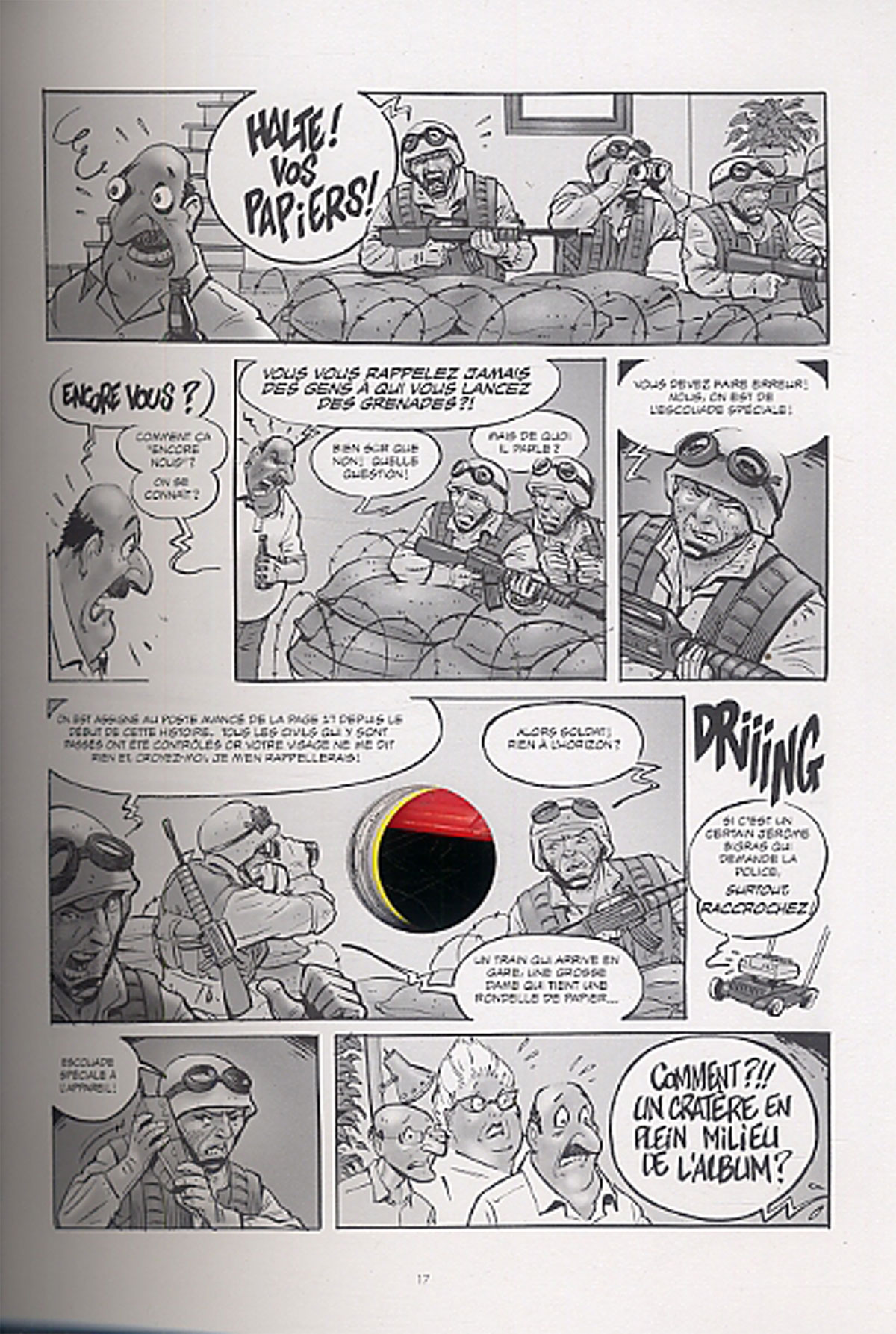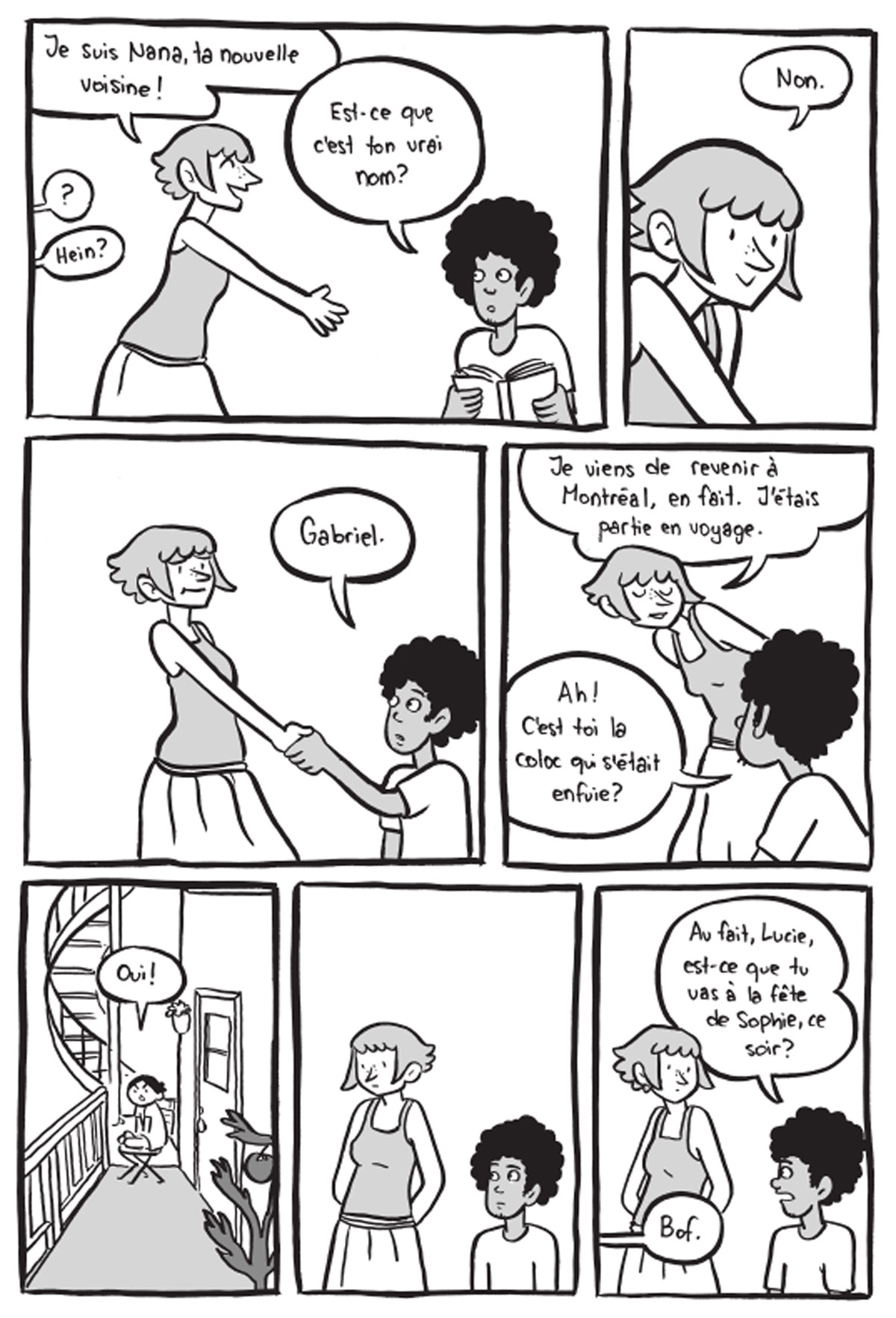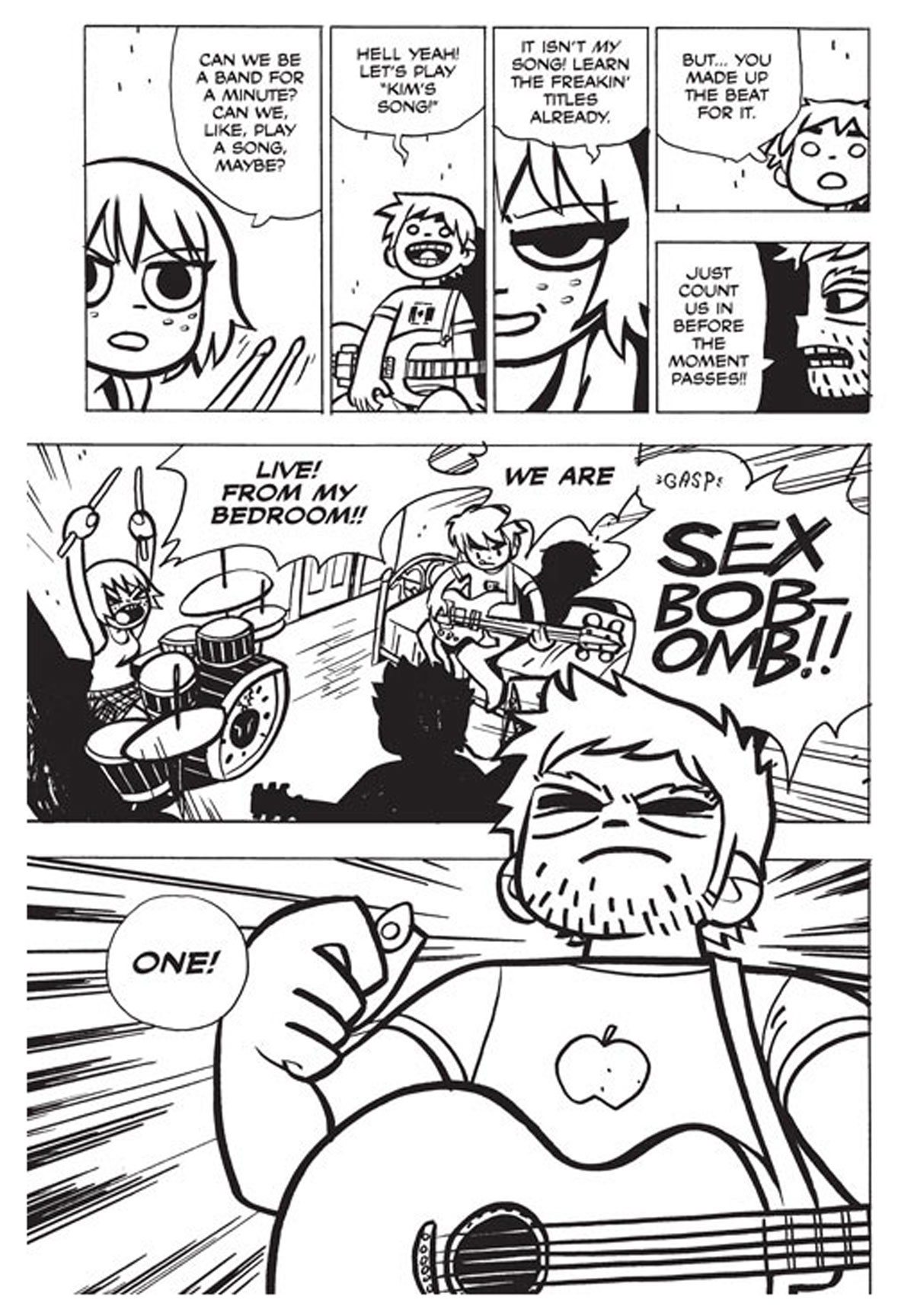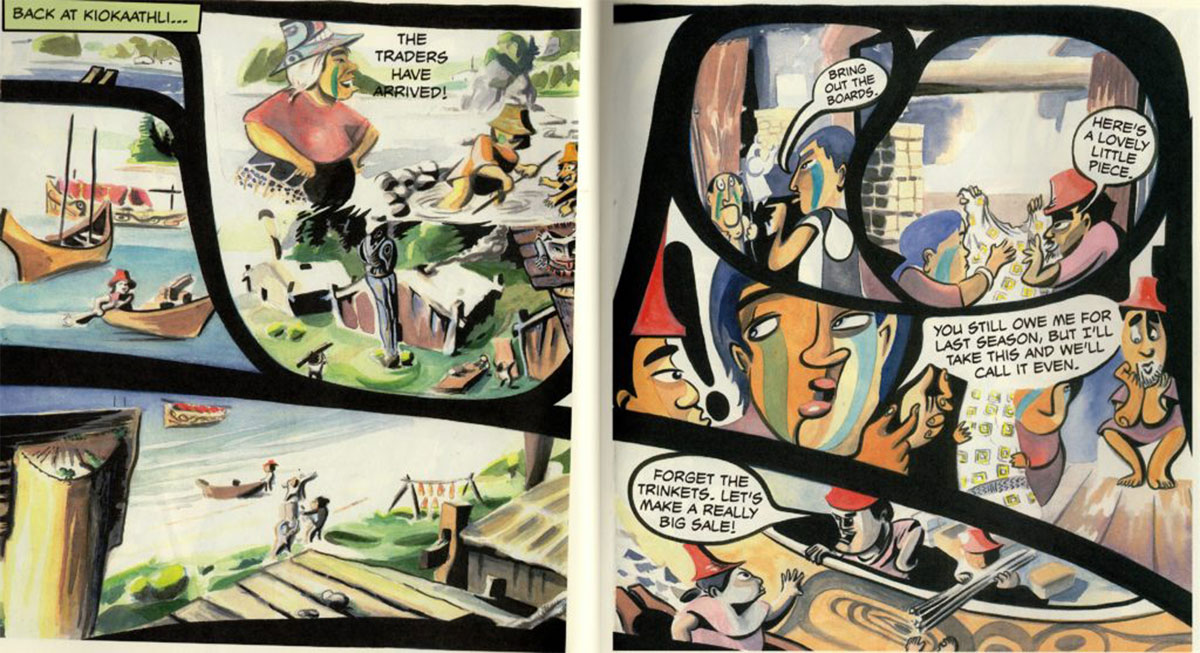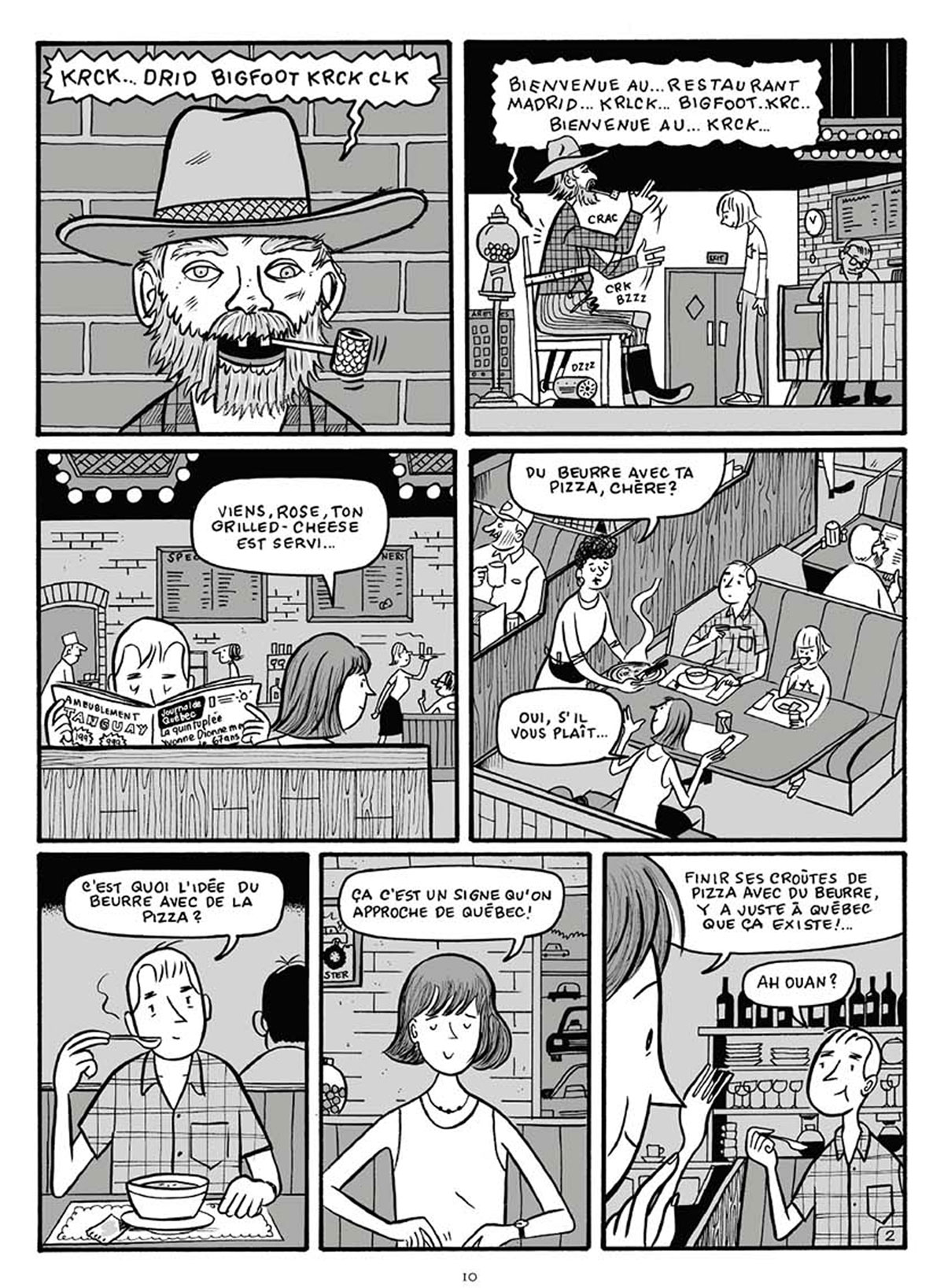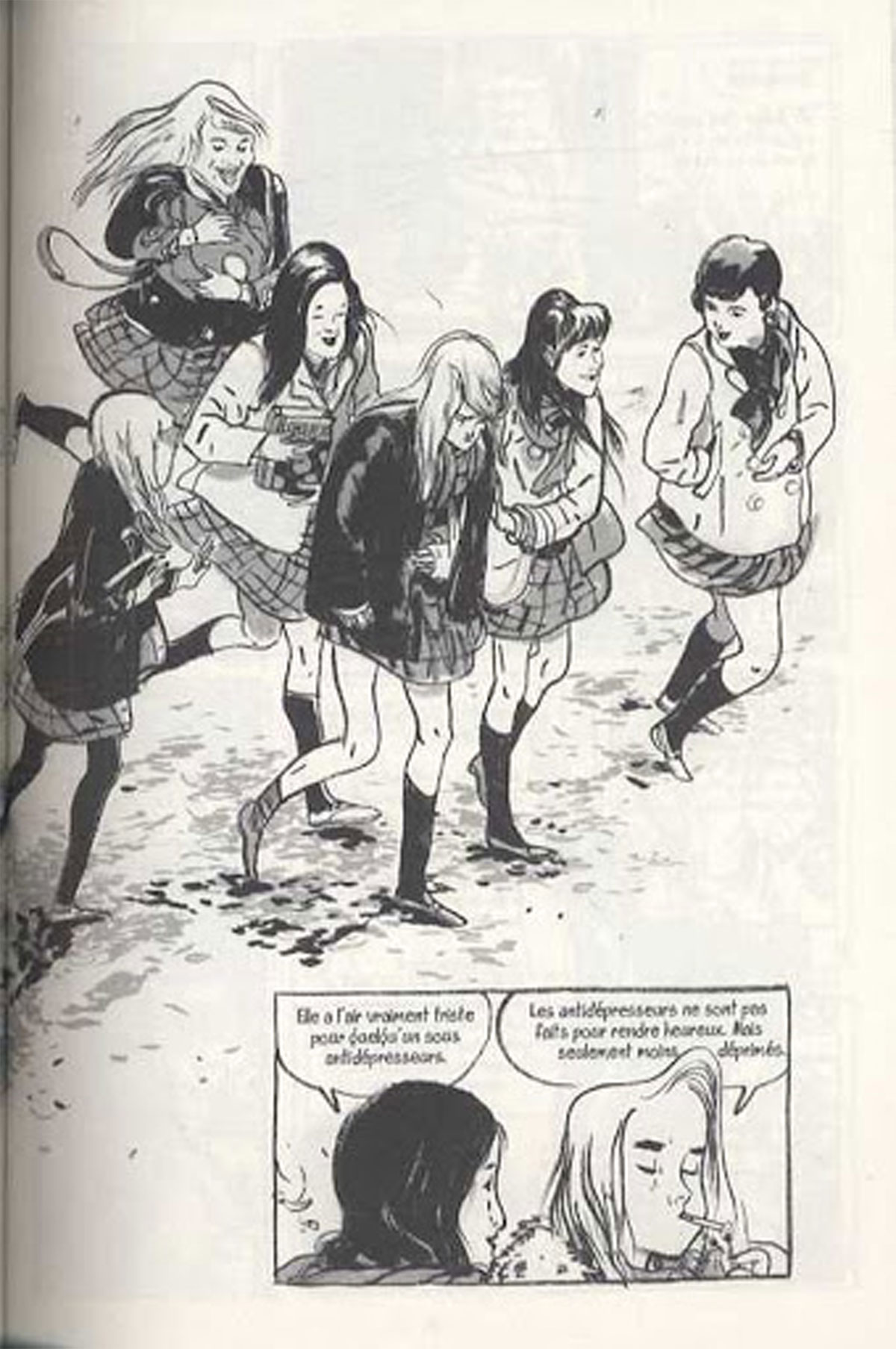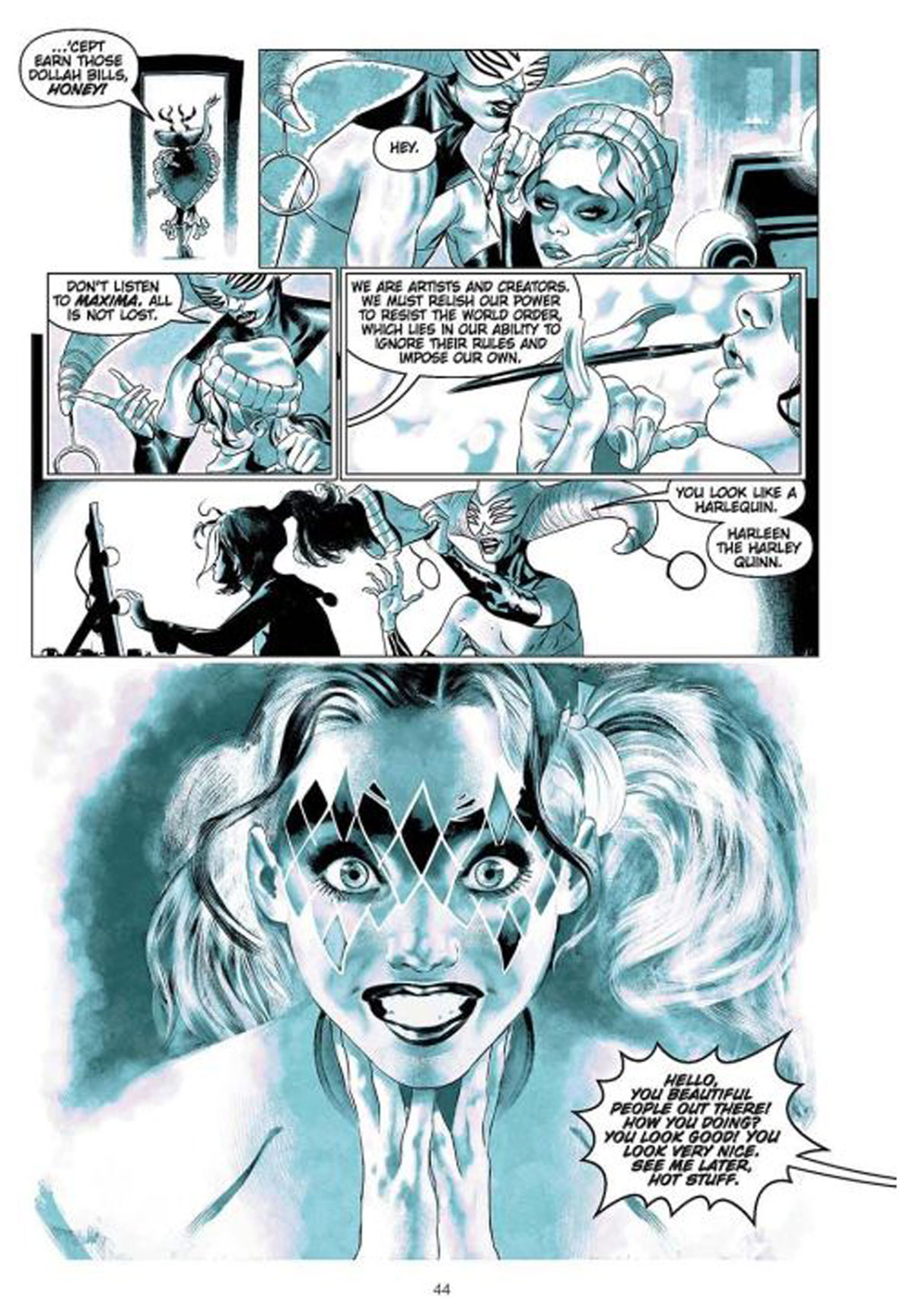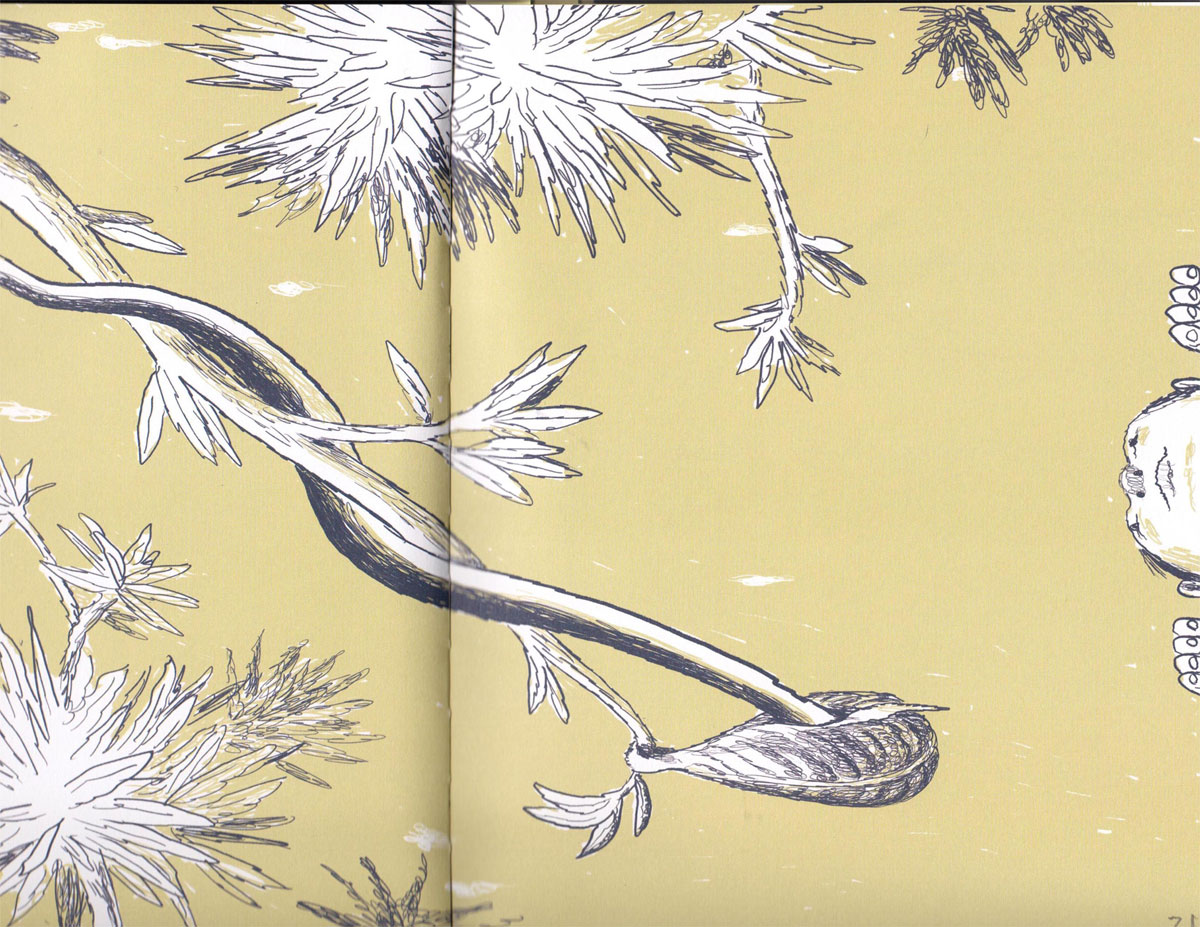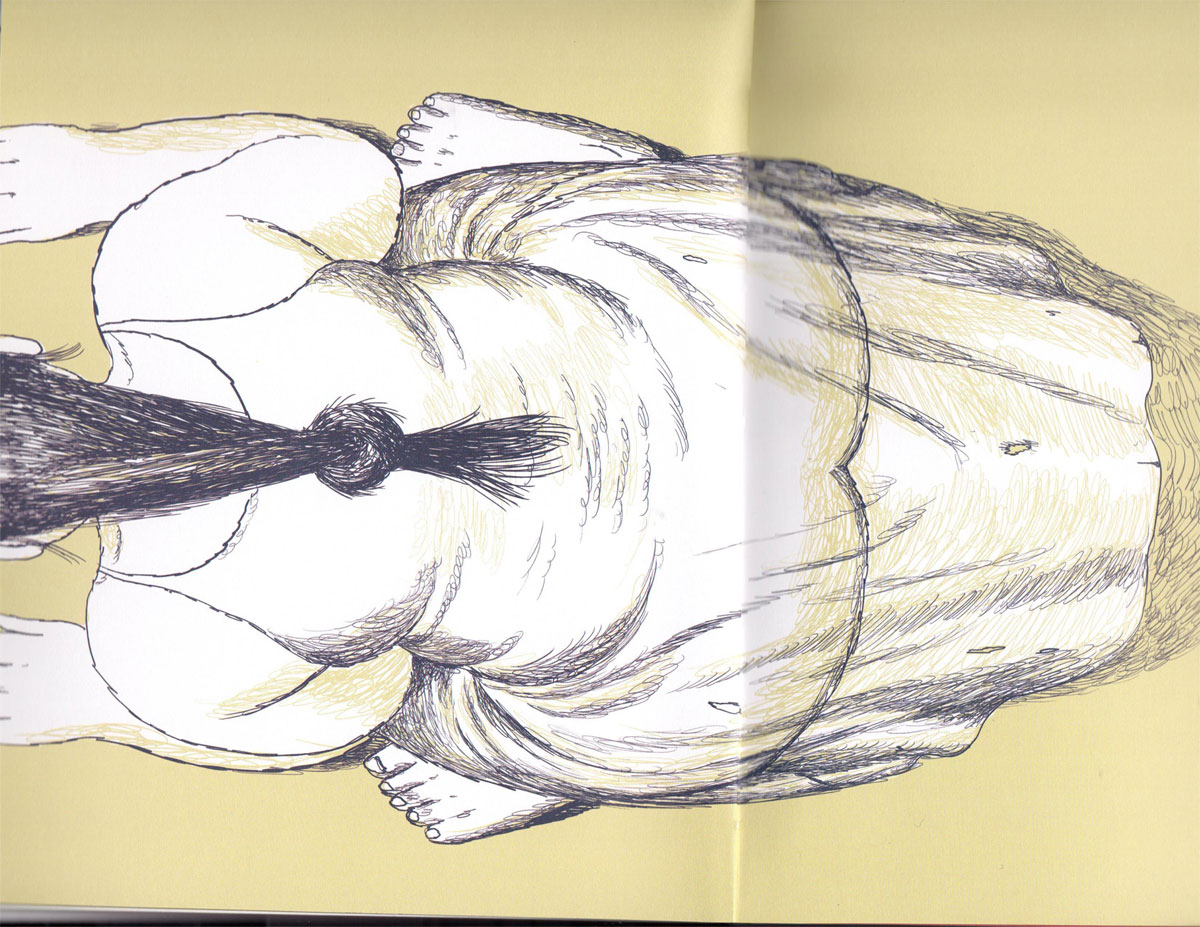Introduction
Since the beginning of WWII to the early 1990s, each mainstream comics world lived in a bubble without many connections to other comics bubbles, aside from some influence from the American tradition with its enormous soft-power. The three mainstream comics worlds (US, Japan, Franco-Europe) worked mostly within their own economic and cultural models. Similarly, and with few exceptions in Canada (e.g., Lemay 2021), the two worlds of comics (Anglo-Canada) and BD (Franco-Canada; Franco-Québec) lived separately and without much influence from each other’s tradition. The phrase “two solitudes” refers to the two main linguistic groups in Canada to explain their non-communication. It was first popularized by the Hugh MacLennan’s novel (Two Solitudes, 1945; French translation, 1963) and then applied to high culture (e.g., literature). In several articles (Reyns-Chikuma 2020) and in this one, I argue that it also applies to the Canadian comics world. However, in the last 30 years, other solitudes also emerged in the Canadian comics world. This is the case of the Indigenous community, which has seen a mini-boom in comics production (Rheault 2020), and other ethnic, cultural and linguistic communities including the Japanese-Canadian one. The latter has been present in Canada since at least the 19th century (Sunahara 2011) and in Canadian comics world since at least the 1990s.1 As shown by studies like Manga: An Anthology of Global and Cultural Perspectives (2010) and Global Manga: Japanese Comics Without Japan (2015) among many others, manga had a global impact on most of Asia and from the USA to Algeria and France. Canada is no exception to this manga “fascination.”
In this article, I study the influence of manga on the Canadian comics worlds. I show how, the Anglo-Canadian comics world has been quite receptive to manga influence, while the French-Canadian one has been much less welcoming. This different degree of influence can be seen in one aspect of the formal structure of comics: the various panel layouts on the page, sometimes called the grid. Mainstream French-Québec BD (bande dessinée québécoise or BDQ) tends to use a more regular grid than mainstream Anglo-Canadian comics. The former one is strongly influenced by the Franco-Belgian tradition where the regular grid prevails (Peeters 1999:49–82, and Groensteen 1999:31–120, where the theoretician wrote a “defense and illustration of regular layout,” that he nuanced later but still defended in 2011—see translation 2013:133–157). The latter adopts a more fluid form of the grid, which is also typical of manga style. Using Brenna Clarke Gray’s parallel between territorial border and comics gutter (Gray 2016), I argue how these differences can be seen in some concrete examples from both Canadian linguistic communities. I conclude with the Tamaki cousins’ graphic narratives to emphasize how fluidity is a reflection of, and on the Anglo-Canadian comics world, and maybe beyond, which could be seen as a critique of the notion of rigidity in various fields (identity, sexuality, border), as well as a calling for textual, sexual and national fluidities.
Below (Figures 1, 2, 3), one can see various examples of regular grids in francophone Québécois BD. The first one was first published in CROC magazine in the early 1980s and then in album format. In the second one, one can see that even in an experimental album, regular grid dominates. In the Figure 3, one can see that even in very recent commercially successful BDQ the regular grid also prevails.
Québec Bédéistes Resist and Avoid Manga Culture
In the last three decades, Canada, like the rest of the world, has welcomed many forms of Japanese culture, from sushi to anime and manga. However, this isn’t true for one big “village”, Québec that seems to have resisted. Contrary to the Anglo-Canadian comics world, until very recently, BDQ seemed to have mostly avoided manga influence. Although there is a strong manga and manga-type reading community in Québec, as shown by the success of the comicons and other otakuthons in the French-speaking province, very few artists seem to have been influenced by the manga world. Moreover, the few BDQ creators who have been influenced by Manga are not popular yet. Conversely, the most popular Franco-Canadian artists seem to ignore manga culture as shown through their works and their interviews. The Canadian Toronto Comic Arts Festival or TCAF website gives the following and unconvincing list of seven francophone bédéistes supposedly interested in manga and who were invited to the Canadian embassy in Japan to represent Canada: Thierry Labrosse, Francis Desharnais, Gautier Langevin, Stephanie Leduc, Renée Nault, Nunumi, and Cab (TCAF 2018). First, within this list, only Nunumi is obviously influenced by manga. However, she is barely known having published only one book with very few critical reviews (Un Billet pour nulle part with Canadian-Québécois publisher Front froid). As already announced by her chosen pseudonym, Nunumi also uses both a drawing manga style (e.g., obvious in the facial features: small, pointy nose; big expressive eyes), and her framing style, while the panelling style of Caroline Breault, alias Cab, are still quite closer to the Franco-Belgian grid. Additionally, by simply going over the five others’ comics, we can only conclude that there is hardly any manga influence. Second, we could add a couple of names to the list, but these few manga-influenced artists are all recent, not quantitatively present on the Québécois or Francophone markets, and none of them have ever been considered representative of BDQ up to now. For example, Mira Falardeau recently published a study on contemporary BDQ entitled L’Art de la bande dessinée actuelle au Québec (2020), and only two names out of 71 present some manga influences: the previously mentioned Caroline Breault AKA Cab, born in 1985, with Hiver nucléaire (2012), and Sylvie-Anne Ménard, aka Zviane, born in 1983, most obviously in one published work, Apnée (2010).2 What Falardeau’s study confirms is the overwhelming influence of the Franco-Belgian tradition in Québec and in the Québécois comics world until very recently. One can see that also through Tristan Demers’ books (Tintin et le Québec, 2020, 2010 for the 1st edition, and Astérix chez les Québécois, 2018), and the numerous parodies of that tradition (such as the ones by Yves Rodier, and J. Guilemay’s Bojoual le huron-kébécois).
There are also very few academic articles on these authors and not one analyzes manga influence in their work. Moreover, although the manga-anime fan communities in Québec both in French and in English are quite significant, Québécois academics, who are often closer to artists (and sometimes publishers) than to the fans, have not shown any interest in this manga phenomenon in Québec (Rampant 2010). Furthermore, contrary to Anglo-Canadian publishers (e.g., Udon in Ontario) and French publishers (e.g., Kana; Glénat with several collections-series), no one francophone publisher in Québec has specialized in manga or even has a manga collection despite that it would be a good investment given the continuous success of manga even in the province. To some extent, this absence of manga in the gatekeepers’ agenda (the publishers’, but also the critics’) is a surprise. If we accept that the Franco-Belgian tradition has a strong presence in the BDQ world and that manga has had a strong influence on creators, publishers and fan-readers in France and Belgium, it should follow that the manga world would also have an impact on BDQ. Manga was and still is so successful on the old continent that it produced two types of manga-influenced BD. The first one developed in the late 1990s as “La nouvelle manga” (“The New Manga”) and brought together French and Japanese comics artists. The second one, although quantitatively small if compared to both the whole BD production and the whole translated manga production, is a new genre called manfra. Some of these manfras sold hundreds of thousands of copies in France. It is a hybrid form of BD and manga (manfra=manga française/French manga), and has been present in Francophone Europe since the beginning of the 2000s (see Reyns-Chikuma, 2016; Rheault 2016). Although it has to be noted that Québec has welcome Japanese culture in other art worlds, the most famous one might be in the theatre with for example Robert Lepage’s play, Les sept branches de la rivière Ota (1994), there is no equivalent of this manfra movement in Québec. Similarly, since the other main influence in Québec is American pop culture including the American comics world (mainly but not only from the superhero genre), itself strongly influenced by manga and anime (Johnson-Woods 2010; Hemmann 2020; Brienza 2016), one would think that the American craze for Japanese comics might have had an impact on the BDQ.
There are several factors that seemed to have played a role in this non-influence. It is now a recognized fact that the manga boom in the US owes a lot to anime broadcasted on American channels (Goldberg, in Johnson-Woods 2010, 283) and on French channels in France in the early 1990s (Bouissou, Malone in Johnson-Woods 2010; Beuve-Méry 2006). In Québec, broadcasting of anime was later and rarer. In spite of this delay, there was a fan community which, like in other linguistic and cultural fan communities around the world, bought from the few stores selling manga in Montreal as the repeated expansion of the store “Imaginaire” in Montréal shows, from stamps to books, comics and manga, anime and (Japanese) games (see Imaginaire). They also borrowed from each other and from the few libraries that circulated manga, and, through illegal copying and scanlation, “stole” mangas (Goldberg [281–96] and Couch [212–14] in Johnson-Woods 2010; and Brienza 2016:164–65). According to some documents and email exchanges with Québécois librarians, libraries in Québec were quite late to accept manga. In 2004, in a 230-page report on the state of the book, manga is not mentioned once, but a 2008 article by François Mayeux writes “It is impressive to see that out of the 3195 new books published in 2008, 1418 are translations of mangas, mangwas, manhuas, that is 44% of the productions,” and a bit further, “[it] appeals much more to girls and young women because of its genre shôjo” (2008:29–30, my translation). This was also confirmed by testimonies from three librarians in Québec through several email exchanges (during the third week of July 2020). Fan-otaku conventions were also organized in Québec: the first one was created in Montreal in 2008, followed by one in Québec City in 2014 (that is, 11 years after the first Canadian one in 1997 in Toronto, and 9 years after the first French one—Japan Expo in 1999). However, the Québécois BD producers (artists and publishers) do not seem to have responded to this increased demand. Meanwhile, in Anglophone Canada, both through Anglo-Canadian channels but even more through readily available American channels, and through illegal ones, Anglophone spectators and fans could watch a lot of anime. They also could buy manga in many places including more and more OEL (Original English-Language) manga, and Anglo-Canadian artists and publishers seem to have responded more favorably to these aesthetic and popularity trends.
Another key factor that might explain this frigid reception of manga culture in Québec is the fact that “la belle province” has often felt under attack. French Québécois culture has always been threatened by English and Anglo-culture. From the 1960s on, Franco-Québécois had the power to assert their linguistic and what they saw as their cultural identity through legal, political, cultural and psychological ways, starting with the “Révolution tranquille” (Bélanger 2000). For example, the BDQ is a very small market and, as shown by critics (Viau 1999, 2008) and artists (e.g., Beaulieu, 2012), it is extremely hard for artists and publishers to survive American, French and recently, Japanese competition. Furthermore, BDQ developed during the exact same years as did the “pro-independence” movement, which defended and promoted Québec and francophone culture. Therefore, BDQ greatly overlaps with these pro-separatist movements (St-Cerny-Gosselin 2016) that shared, if not outright anti-Anglo, anti-French and anti-Other attitudes, at least some discomfort towards “foreignness” (Knowles 2016). St-Cerny-Gosselin’s interpretation is confirmed by Harriet Kennedy’s research in her Doctoral Thesis entitled Panels and Politics: Bandes dessinées and Referendums in Québec (University of Edinburgh 2016), showing that, since at least the 1960s, BDQ is deeply connected to Québec nationalism and identity which is reflected not only in its ideas, stories, and characters but also its semiotic apparatus. This is also obvious if one compares how a nation like France that is more secure in its BD world welcomed manga (of course with some resistance here and there, both from various political or social groups and from the old guard of creators like Uderzo—see Le Ciel lui tombe sur la tête, 2006).
I would argue that all these factors combined together induced the Québécois comics world to be cold and resistant towards manga. Hence, except for some rare cases of accepting Anglo influence (as mentioned previously through superhero parody and avant-garde comix [see Reyns-Chikuma, 2020]), most BDQ artists did not welcome Japanese influence and instead, firmly adhered to the Franco-Belgian tradition. Michel Rabagliati (born in 1960) is probably the most emblematic BDQ author and, although clearly not dogmatic, he is a product of these years as he himself recounts in his BD (see specifically Paul à Québec, p.14, see Figure 6). As argued by Christophe Meunier and Sylvie Dardaillon in two articles (2013, 2016), Rabagliati’s BD are typically and topographically anchored within Québec geographical and mental orders. Moreover, he is clearly influenced by the Franco-Belgian tradition and does not claim any other influence either from comics or from manga. Some of the most famous Québec comics artists like Guy Delisle (born in 1966) and the duo Dulaf (born in 1973) and Dubuc (born in 1977) moved to, or their publications to France and published graphic narratives and comic strips without any Japanese influence. It is much the same for the next generation born in the 1980s and who could have been exposed to anime on TV and the global manga boom. There are obviously some exceptions, although these are few and very recent, as mentioned above.
Asian-American Passeurs
On the other hand, Anglo-Canada counts at least a dozen of authors influenced by this specific global trend: from very popular ones like Bryan Lee O’Malley with his world-famous Scott Pilgrim (Figure 4) to Johnie Christmas’ superhero genre contribution (e.g., Firebug, 2018, and Angel Catbird with Margaret Atwood, 2018; see his podcast online) (Christmas 2019) to the lesser-known Mathew Forsythe (see his July 7th email to me). Like Christmas, there are many Canadian artists who work for American comics companies like DC, Marvel, Image Comics; the majority are anglophone and very few are francophone; that might be another factor that would explain the different fluidity between Canadian comics and foreign comics (American, Japanese, Japanese-American). Mariko Tamaki regularly works for American comics companies. Both Tamaki cousins are also well-known within the world of comics and graphic narratives and are definitively influenced by manga culture from both a formal (the manga fluid style) and content point of view (shôjo-girl-centered culture).
The embrace of manga influence in Anglo-Canada can be partly explained by reversing the factors driving Québec’s avoidance: several TV channels broadcasting anime, linguistic security, a stronger defense of multiculturalism, shared, non-threatening cultural market and soft-power between Canada and the US. The other key factor is that the immense majority of Japanese-Canadian and Asian-Canadian communities live in Anglo-Canada, and since they often played the role of passeurs of Asian cultures, including Japanese manga and anime, Anglo-Canadians tend to be more exposed to it. Moreover, there are huge Asian-American, including Japanese-American, communities in the US that have a strong impact on Canada since there are no linguistic barriers (Chiu 2014). In addition, beyond the several famous Japanese-American comics artists in the US (e.g., Adrian Tomine), if there are also several prominent Anglo-Japanese-Canadian comics artists in Canada (e.g., the Tamaki cousins), there are no well-known Québec-Japanese or French-Japanese comics artist. Although, the Tamaki cousins welcome various influences, they certainly could be also seen as passeurs of mainly manga in Canada.
While they are not really appreciated in Japan (Berndt 2014), the Tamaki cousins’ graphic novels were and still are quite popular in Canada and beyond. They also received numerous joint and individual awards. In interviews, both claim a multitude of influences from comics (e.g., from Archie comics and Calvin and Hobbes strips to author Will Eisner), to BD (e.g., Franco-Québécois Michel Rabagliati), to avant-garde (Franco-cosmopolitan Julie Doucet) to more mainstream literary graphic narratives (e.g., Anglo-Canadian Chester Brown, American Daniel Clowes, the Israeli Hanuka Brothers, Italian artists Giardino and Igort, and the Belgian Hergé). The multiple influences are obvious in their style and themes which are mostly related to hybridity, boundlessness, refusal of the binary patriarchal system, and the diversity and the transgressions of some of their characters. Strangely enough, the cousins rarely mention manga influence, even if such influence is obvious in the style of some of their graphic stories and in the centrality of the female point of view typical of the shôjo. It is possible that they have remained silent on manga influence to avoid Japanese, ethnic and manga labelling and because both, as mentioned above, claim diversity and flexibility as key to understanding their work.
In the second part of this article, I would like to turn toward a more formal analysis. Using Brenna Clarke Gray’s argument about the parallel between border and gutter (Gray 2016), I will show how the Tamaki cousins exemplified the Anglo-Canadian fluidity in the comics world. That fluidity can be seen in their ways of using panels and frames as a reflection of, and on, the notion of fluidity, specifically in sexuality but also in ethnicity and more generally, in the representation of identity.
The Border in the Gutter
In an article titled “Border Studies in the Gutter: Canadian Studies and Structural Borders,” Clarke Gray argues that the way the border-gutter-frame is used in comics is meaningful and reflects the way the geographical national border is constructed (Gray 2016). Hence, “[i]n Louis Riel, Brown uses a rigid border-and-gutter structure that serves to underscore the colonial used to literally police the Métis people” (2016:171), while O’Malley’s Scott Pilgrim and Michael Nicoll Yahgulanaas’ Red (Figure 5) welcome other soft-power influences (mainly Japanese through manga), and use the border-gutter structure in a less regular and even transgressive way to reflect (on) the critique of the national borders (See also Harrison 2016, 51–75). I argue that one can easily apply this parallel between the use of the gutter and the reflection on the notion of (textual, sexual, ethnic, national) borders to most of the works produced by the Tamakis, who both live and advocate fluid identity through fluid sexuality and fluid textuality. It is however important to understand that this parallel between border and gutter does not apply automatically. If one tradition has a fluid layout, it does not automatically imply that it exists within, or advocates for, a culture with fluid borders (national, sexual, …). Like Gray’s, my interpretation is contextual. Moreover, one could argue that readers could have a fluid and playful reading of a traditional rigid grid as Oubapo experiments show. Interestingly, within the French mainstream comics tradition (BD) which still tends to use a quite regular grid, in his two theoretical works (1999, 2011), Thierry Groensteen promoted a more fluid reading style that would partly subvert the rigidity of the grid in the mainstream. But although very compelling and useful for some alternative BD, like any semiotic reading, this “theory” is not empirical and therefore one does not know if that multilinear reading through braiding (“tressage”) is real, and for which readers, and how this fluid reading is actually facilitated according to some structuring of the frame, page and formatting.
Michel Rabagliati (2009), Paul à Québec, Montréal: La Pastèque, p.10 [The Song of Roland, Conundrum, 2011] © Michel Rabagliati.
Although it is possible to find exceptions (especially in the non-mainstream), there is a significant difference between the flowing through frames and pages in the mainstream Franco-European tradition and the Japanese mainstream tradition as shown by many studies of manga (see McCloud 1993; Rommens 2000; Cohn 2005; Canivet-Fovez 2014:63–78). However, as Berndt showed, the form only is not necessarily the good way to understand how a comics work (manga or BD) is understood by the readers (Berndt 2014: 257–278). Like American and some alternative French comics, Japanese comics more often use techniques such as irregular grids made of inserts, various types of non-square frames, splash pages, bleeds that constantly make reading flow forward smoothly and quickly. Although this is not only Japanese, it is more obvious and common in the manga. This flowing visual style has a multifactorial context such as for example the strong influence of mainstream TV anime (which in turn is less flowing than Western animation) due to the deep connection between manga and anime within a media mix production culture (Reyns-Chikuma 2019). A second factor is that the reading of manga is often done in public transportation, which has an influence on the attention span and tends to favor a quick page-turning reading style, in turn requiring more fluidity in the aesthetic style.
Although the mainstream Franco-Belgian tradition is far from being monolithic, one can say that the use of the grid, even if irregular, is bande dessinée’s most common feature. As explained first by Benoît Peeters (1998), then by Thierry Groensteen (1999, 2011), there are several types of grids: from regular ones (where each frame of the page or even of the whole story is the same size) to variations that can be called irregular grids (with one frame or several ones on the page being bigger and smaller). However, even when authors play with these sizes for various reasons (“decorative,” Peeters 1998: 58–62; rhetorical—e.g., “landscape panel,” i.e., horizontal panels in one of the tiers; see Peeters 1998:62–66), and except when it is deconstructive (also called “productive” in Peeters 1988:683), the layout of the vast majority of the pages in mainstream BD is still based on the grid, whether regular or not. Groensteen tends to base his theories more on what could be called alternative comics-BD (for a discussion of the American alternative scene, see Hatfield 2005). According to Gilles Ratier’s Annual Report on Franco-European BD, alternative represented only 15% in 2006 (2007), and the word “alternative” is not used in the following yearly reports.
In Comics and Narration (2013), Groensteen wrote some pages with some interesting reflections on the topic (even if sometimes problematic). He writes: “The type of manga that features the most unusual layouts, those that diverge the most emphatically from Western conventions, is without doubt shôjo manga” (2013:57, italics in the original). After explaining how the device called the catwalk effect “liberated the layout of shôjo manga” (2013:57), he then takes Peeters’ classification to call it rhetorical, that is, “the panel adapts its shape to the action portrayed” (2013:62) accentuating narrative effects. He then distinguishes the Western comics favoring the rhetoric of action from the shôjo which is all about the rhetoric of emotion. If it is true for many mainstream shôjo manga, it is not for all of them. Moreover, Groensteen also previously recognized that these shôjo techniques are used by shônen manga as well (2013:59). But whether it is used mainly by shôjo and for rhetorical effect, and the multilayer layout replaces a multiframe layout (Fusanosuke), and this multilayer layout creates ambiguity (Berndt), Groensteen concludes: “It is the dialectical play between these alternative options that gives shôjo manga its particular dynamism” (2013:63). We therefore could conclude about Groensteen’s writing on manga that mainstream manga (mostly but not only, shôjo) uses less the traditional layout (very common in mainstream BD) which partly contributes to creating dynamism.
As written above, Québec has mostly been influenced by the Franco-Belgian tradition, which can be seen in their more regular Franco-European framing style. But I argue that in the Québec case, there is another possible explanation for keeping the regular framing beyond the Franco-Belgian influence. It could be that, as much as borders were an issue for Riel himself and for Brown’s representation of Riel as discussed in Clarke Gray’s article, borders have also been a big issue in Québec since its foundational beginning. They have been modified several times up until the Terre-Neuve/Newfoundland forced territory separation in 1927. More recently and therefore perhaps more importantly, there is intense conflict between Anglo-Canada and Franco-Canada over Québec’s independence and autonomy. The border in question is more political and symbolic than territorial, but it is still extremely emotional.
If one looks at most Franco-Québécois authors’ BD, they obviously use a fairly fixed grid-style (also called the gaufrier in French, or waffle-iron). This is especially true of the most popular ones, such as the previously mentioned Rabagliati, whose BD deal directly with geography and identity, as shown by Meunier and Dardaillon. Interestingly, in Rabagliati’s work, the pages that correspond less to the gaufrier style show a map that reinforces the issue of border (in general, and specifically between Québec and Ontario, or Canada and the US, but never between Anglo-Montréal and Franco-Montréal! [see Reyns-Chikuma 2020; Figure 4). I systematically reread fifty BDQ and can confirm that the grid, even if often irregular, that is, away from a standard 9-panel grid (even if only slightly so), is the norm (Figure 1). Although this format in itself does not mean that reading such regular gridded pages is mechanical and done from one frame to the next in a non-fluid way, the first impression is one of less dynamic fluidity, especially if compared to the constant subversion of the grid in manga. As an interesting BDQ counter example, Isabelle Mélançon, one of the rare francophone Québécois bédéistes who is still quite unknown but who explicitly claims to have been influenced by manga, emphasizes fluidity: “my drawing style is heavily influenced by American and Japanese animation as well as older Victorian and french [sic] illustration work, creating a fluid yet detailed mix” (her website, my italics).
Similarly, recently published Anglo-Canadian comics, especially the most popular ones, tend to subvert the gaufrier more overtly. After the autonomy of the Canadian Golden Age (Bell 2006, 41–56), comics in Canadian newspapers and magazines were overshadowed by American syndicated comics from 1947 onwards. The Canadian comics world reclaimed a certain autonomy vis-a-vis US comics only during the recent 1990s’ boom. This can be seen in graphic narratives like Seth’s works, whether it is his graphic novellas or his addition of Canadian comics artists to his collection and his canon (e.g., Doug Wright), and in popular comics such as Scott Pilgrim which can be interpreted as showing pride in Toronto and in Canada (Gray 2016: 179–180). Within the whole Anglo-world, led by the USA, Anglo-Canadian production is also part of the globalization movement, which makes it more profitable and assertive than the small Québécois market even when it is open to the rest of the highly competitive Francophone world. Hence, it is easier to understand why the Anglo-Canadian comics world welcomed the Japanese tradition, e.g., manga, more easily than the Québec comics world, which is so often on the defensive.
Skim or Displacing the Topic
Jillian Tamaki was born to Japanese-Canadian parents in 1980 in Ottawa and grew up in Calgary. She is therefore from a mixed cultural heritage. Although she is a self-proclaimed feminist, in interviews she emphasizes that she does not make conscious efforts to include themes such as feminism and diversity even if her work does include ethnically and sexually diverse characters. Clearly, a critique of binary patriarchalism and heteronormativity prevails in her stories. From a formal point of view, a great variety of framing is used, from splash pages to bleeding, with few pages using a grid, and even fewer a regular grid, in contrast to the more regular grid of the Québécois BD. Her first book, Gilded Lilies (2006), is a mix of paintings, personal drawings, illustrations and comics. In 2008, she published Now & Then & When, which shows herself in various stages of her life and emphasizes the evolution of identity (it was purchased by the Library of Congress in 2011).
Skim is a graphic novel mainly about two characters, a teenage girl who has romantic feelings towards her female teacher, and a classmate whose ex-boyfriend may have been gay and died of suicide. Although the story takes place in 1993, that is, after the success of Magical girls (1998 on US networks) and even after the Spider-Man loves Mary Jane (2005) by the Canadian-Japanese artist Miyazawa Takeshi who is also clearly influenced by shôjo (The Pulse 2006), its content and form are influenced at least partly by manga culture. Fluidity in form and content is one of the best ways to describe the Tamaki’s graphic novel. According to one reviewer, “the expressionistic fluidity of the black and white illustrations serves the purpose of pages of prose;” and there is little plot and excess dialogue (Baxter 2009, 133). Like most of the Tamaki cousin’s stories, Skim stages characters who are teenagers or young adults who are at an age at which everything is still “fluid,” that is, changing in one way or another. Moreover, these characters question themselves, their entourage, and the readers about various ways of defining ethnic and sexual identity (Figure 7).
Jillian Tamaki and Mariko Tamaki (2008), Skim, Toronto: Groundwood books, p. 69. © Jillian Tamaki and Mariko Tamaki.
The title, Skim, is itself rich in contradictions and is without a clear, fixed meaning. Without reading the novel, the word “skim” alone on the front cover could be understood as an order: “Skim this, read this quickly,” which fits the connotation of superficiality associated with mainstream manga reading formats and skills. But the opposite is required to fully apprehend the content: as indicated by the graphic novel genre, Skim’s deep narrative must be read slowly. However, in this case, slowly also implies fluidly. Similarly, we learn that Skim is the nickname of the protagonist as a cruel reference to her main anxiety about her weight (as opposed to skinny and light). As shown by Monica Chiu, Jacqueline Berndt and Kathryn Hemmann, race issues are of prime interest for many readers in the US and we can assume in Canada too. For example, in her chapter, “A Moment Outside of Time: The Visual Life of Homosexuality and Race in Tamaki and Tamaki’s Skim,” from her edited book, Drawing New Color Lines (2014), Monica Chiu shows how the reading of a transnational product is different in Japan and in the US, with the example of racial issues in Skim.
The history of the French translation and publication of Skim is also interestingly revealing. The question would also be: if Chiu (and others like Berndt) is right about the displacement of the reading of a graphic novel like Skim between the Anglo-comics world and Japan, what type of displacement can we see in the French translation? It would be difficult to answer that question since there is no book review of Skim in French in Québec except for a few online, mostly from non-gatekeepers’ websites. Nevertheless, the story of its foreign publication is already telling. The book was quickly translated into French in 2008, the same year as the original English version was published. However, it was published by the French-Belgian Casterman and not by a French-Canadian publisher. Moreover, it was published in a select collection that places more emphasis on the novel-narrative than on graphics, as the name of the collection, “Écritures” (Writings) reveals (Suvilay 2016). Casterman’s choice is reinforced by the fact that the Belgian publisher has extensive experience with transnational comics and graphic narratives since the creation of their magazine, (À Suivre), in 1978, that welcomed graphic novelists from various nations and of international stature. The concrete reasons for the “choice” of Casterman are not known. One reason might be that the Tamakis seem to have French connections, as Mariko’s translation-adaptation of the French graphic novel Luisa suggests. Another is the French market’s greater viability and variety relative to the Québec market. One of these reasons is certainly also that French-Québécois publishers, as written above, seem to be less sensitive to manga style.
Both cousins published other graphic novels together, alone, and in Mariko’s case with other artists. The cousins also published This One Summer in 2014 by the same Canadian publisher Groundwood Books House of Anansi Press which is a bit closer to a classic style, especially in its grid structure. But the theme of all their works is always related to fluid identity and reflects, or is reflected in, the structural fluidity. Hence, although some tend to essentialize the ethnic hyphenated identity, both authors explicitly refuse to see it as reified in their work and in their life, where their non-normative sexual and racial identities, personal and fictional, play against white patriarchal binaries. This refusal can also be seen in Jillian’s most recent publication, SuperMutant Magic Academy (D&Q 2015). The title already refers to fluidity (mutant). This book is made of many short stories that were first published online on her website and one can say that they reinforce one type of fluidity, i.e., between digital and print media. Also, although the regular grid is more present in these stories than in her other books, both the content, through characters that are not yet completely formed as adults, and the form, through the blatant and un-conventional drawing style changes from one story to the next, emphasize her refusal to stick to one style only, hence her fluid approach to style. Finally, this fluidity also exists through the fact that Jillian worked in several formats and media, from illustrating Jane Austin’s Emma and other classics to contributing drawings and illustrations to the NYT and The New Yorker.
Mariko’s Queer Scripts
Mariko Tamaki, whether alone or in collaboration with another artist, plays similar serious games against various types of formal and social rigidities. Born in 1975 to a Jewish-Canadian mother and a Japanese Canadian father, her heritage is even more mixed than her cousin’s. She is also even more of a militant activist in the LGBT+ community. She is primarily a scriptwriter whose scripts mostly concern queer issues but also expand in a broader sense to challenge the patriarchal binary system, normativity, rigid categories that are sometimes only tangentially connected to the LGBT movement.
We therefore find the same fluidity in content as in Jillian’s stories and in her collaborations with her cousin. But Mariko adds to this fluidity in her own way, contesting genre classifications from graphic novels to superhero stories: from Tomb Raider, Dark Horse Books, 2016 (partly translated and published by Hachette-France) to She-Hulk Deconstructed, Marvel, 2017, Harley Quinn, Breaking Glass, DC, 2019 (Figure 8), to Spider-Man and Venom, Double Trouble, Marvel, 2019. In all these stories, she reinterprets the role of girls and women usually from a male perspective (all these titles have been created and dominated by male artists until today with very few recent exceptions) to a female point of view and with a female gaze that uses very dynamic narratives and subverts the regular grid. For example, in her version of Harley Quinn, Breaking Glass, she insists on intersectionality, that is, the necessary and productive fluidity of the borders between women, social class, and race (Deziel, 2019, online) as the title already hints at it (i.e., Breaking the ceiling glasses). She also challenges the categorization working in a wide range of media, from comic books and graphic novels to novels (e.g., series Lumberjanes, 2017; Saving Montgomery Sole, 2017), to performance art (Quirky Queers, 2005). Mariko also “adapted” Carole Maurel’s Luisa: Ici et maintenant (Boîte à bulles, 2016) in the French translation, Luisa: Now and Then (2018), a BD about a teenager discovering that she is lesbian and that uses a very Franco-European style, including the regular grid. The use of the regular grid is not poorer than the more flowing style; it all depends on the way of using it (see for example Oubapo’s playful comics using regular grid as a creative constraint), and in Luisa what could be seen as rigid in the regular grid is compensated by the play with the mirror/frame issues between the two characters, the mother and the daughter. Her works therefore genuinely play across national and linguistic borders (Canada—anglophone and Francophone; the US—DC, Marvel, …—France and Japan), as well as cultural and sexual, as expressed through her queer publications and reflected in the fluidity and subversion of the rigid “textual” limits: the comics’ gutters and frames.
Mariko Tamaki (2019), Harley Quinn: Breaking Glass, DC Comics, p.44. © DC Comics.
Jillian’s Boundless
Published in 2020, Boundless goes a step further in fluidity. The title helps to make this clear in conjunction with all other characteristics of the book. The format is close to a square, which is unusual compared to the traditional rectangular format. The front cover picture presents a character with an ambivalent, androgynous face trying to tie her hair with a rubber band (Figure 9). This book is an anthology of nine short stories by her, which, is also a rare type of publications in the comics world. It is the formal aspect of the layout that expresses fluidity more strikingly. In effect, Tamaki changes her style for each of the nine short stories in the anthology, from using thick, chunky blocks of ink to hyper-realist detailing, which becomes brushy drawings of plants, to black, white and various colors, and even different colors in the same story. Here pages are not divided into traditional panel-grid. Although the book includes a couple of stories using at least partly panel-structures (“Half-Life”, numbered from page 119 to 130), hence showing that the traditional comics style is also accepted and productive, most stories use frames in a very loose way [“Darla!”, from page 135 to 147] or no frame at all. In both the first and last “stories”, with unnumbered pages and drawn vertically (Figure 10), drawings are even bleeding from one page to the next one, where for example the top of the head of a character is drawn on one page and the lower part on the next page, creating a continuous fluidity similar to what an horizontal fresco could be. For comics fans, the fresco style would unavoidably hints at Michael Nicoll Yahgulanaas’ frescoes, a connection that is also reinforced by other clues to the Indigenous world (facial features, backgrounds, “mythology”; Figure 11). These strong stylistic variations are highly unusual. The immense majority of comics artists usually use one style across one book or even their career. A few artists use two different styles but with an alias, as Giraud did with Moebius. The duality Moebius-Giraud is also visible in the use of the grid: Giraud, the name used for mainstream BD (e.g., Western series Blueberry), uses a regular grid and some variations of it, while Moebius, the name used for his alternative comics/comix (e.g., Arzach), often subverts the grid with a lot of splash pages and non-traditional use of the grid and the frames (non-square shaped frames, insert). Tamaki had already used multiple styles in SuperMutant Magic Academy (2015), but the changes of style in this more recent book are much more obvious. This style could be perceived as paradoxical. At the one hand, it prevents the traditional fluidity allowed by one single style. On the other hand, it creates another type of flexibility where differences in drawing, framing, colors, are acceptable and encourage the participation to the creation of what one might call a multi-cultural book. In this book the reader is exposed to various types of storytelling and aesthetic approaches, also visible in the “world” it seems to refer to, such as the Indigenous cultures.
Jillian Tamaki (2017), cover of Boundless, Montréal: Drawn & Quarterly. © Jillian Tamaki.
Jillian Tamaki, Boundless (2017), Montreal: Drawn & Quarterly, pp.[21–22] (first unnumbered pages of the book). © Jillian Tamaki.
Jillian Tamaki, Boundless (2017), Montreal: Drawn & Quarterly, pp.[21–22] (first unnumbered pages of the book). © Jillian Tamaki.
Also, as hinted on the front cover, the page design forces the reader to turn it around to be able to read the words and the pictures. Interestingly, the middle story is about swimming and the middle page of that story depicts characters that are flowing in the pool. Each of these characteristics can be found in other graphic narratives, including those in the Canadian tradition. But what makes it special is how all together they reinforce the idea of flexibility and fluidity. In some stories, even the passage from one page to another is visually represented by drawing the body on one page and the head on the next page. More directly related to our argument about the grid, all across the book, Jillian uses the grid only occasionally (in only two stories out of nine, the grid prevails over other layouts). Moreover, even in these two stories, the grid varies from a semi-regular structure to a splash. Surprisingly, the back cover uses a classic grid, but this was probably chosen by the publishing team rather than the author. This choice could be explained by the necessity to use a more traditional representation of graphic novels.
Conclusion
We have seen that the reception of manga culture by the traditional producers (publishers, artists, traditional gatekeepers such as critics and academics) in the two Canadian comics worlds is quite different. Second, if we take into account how Anglo-Canadian artists, from O’Malley to the Tamaki cousins, use the fluid layout partly influenced by manga culture to support their critique of rigid patriarchal binaries on nationality and gender fluidity, we can establish a parallel between the way in which most Franco-Québécois artists draw their work and how some Franco-Québécois express their culture defensively and cautiously welcome foreign influences. This is especially evident when contrasting Anglo-Canadian works to the more traditional and regular page and panel layouts of Franco-Canadian artists like Rabagliati. This is not to say that regular layouts in general or as used in Québec suggest that artists and producers are xenophobic or homophobic. Actually, most Québécois comics content explicitly or implicitly express open and inclusive ideas. It is also important to remember that what is statistically valid in the world of comics does not necessarily apply to all members of the comics world in the same way. Many comics fans read manga, attend otaku conventions and view anime. So, there is a demand for manga culture both in its fluid forms and its fluid content (shôjo-girl-woman-centered stories, and other fluid genres—BL, etc.). Moreover, this example of non-interest in manga shows how difficult it is for BDQ to boom in a small market, constrained by legitimate language, cultural defensiveness and author-oriented production. As shown by most research in comics nowadays, except for a relatively short period (1940–1990) and for limited cultural zones, comics have been a transnational phenomenon. But Franco-Québécois comics are struggling to stay alive. The open-minded dynamism of the BDQ young generation, much more exposed to the more fluid, transnational, new technologies, media and ideologies, will be crucial for the future of a Franco-Québécois comics world that welcomes new hybrid content, forms, and formats.
Notes
- Actually Japanese-American comics go back to the beginning of the 20th century with Henry Yoshitaka Kiyama’s The four immigrants manga, which was originally written in Japanese and in English in 1931, and might have reached the strong Japanese-Canadian communities, especially in Vancouver; it was fully translated in English only in 1999 (by Frederik Schodt). The date of the first Canadian-Japanese comics is not clear yet. [^]
- Mira Falardeau cites encore Du chez soi (2012) by Ariane Denommé (born in 1981) who “could remind of some authors’ mangas like Blue (2004) by the mangaka Kiriko Nananan” (124) and Djief (J-F. Bergeron, born in 1971) who in 2006 goes from an avant-gardist style to a manga style with his series Tokyo Ghost (Soleil—a French publisher—in collaboration with the French scriptwriter Nicolas Jarry). [^]
- That deconstruction started very early, actually with the birth of modern comics as one can see in for example Little Nemo (1905) by Winsor McCay and in Krazy Kat (1913) by George Herriman. Also, even where there is no literal grid like in some of Eisner’s graphic stories, one can still “see” the grid, called “virtual” by Peeters (1988:66–67). [^]
Acknowledgements
Merci aux collaborateurs du projet Beyond the Two Solitudes in the Canadian World(s) of Comics.
Author’s Note
Every effort has been made to trace copyright holders and to obtain their permission for the use of copyright material under educational fair use/dealing for the purpose and criticism and review and full attribution and copyright information has been provided in the captions.
Competing Interests
The author has no competing interests to declare.
References
Baxter, G. 2009. “The School of Life,” Canadian Literature 203: 133–134. Available at https://canlit.ca/article/the-school-of-life/. [Last accessed 21 July 2021].
Beaulieu, J. 2012. “Automythology,” European Comic Art 5.1: 25–56. DOI: http://doi.org/10.3167/eca.2012.050104
Bélanger, J., et al. (ed.). 2000. La Révolution tranquille, 40 ans plus tard: un bilan. Montréal: VLB.
Bell, J. 2006. Invaders from the North: How Canada Conquered the Comic Book Universe. Toronto: Dundurn.
Berndt, J. 2014. “Reading a Japanese North American Graphic Novel through MangaLenses,” in Monica Chiu (ed.), Drawing New Color Lines, Hong Kong U.P, pp. 257–278. DOI: http://doi.org/10.5790/hongkong/9789888139385.003.0014
Beuve-Méry, A. 2006. “‘Sakka’: le manga d’auteur,” Le Monde August 3, online: https://www.lemonde.fr/livres/article/2006/08/03/sakka-le-manga-d-auteur_800620_3260.html [Last accessed 15 July 2021].
Bouissou, J.-M., 2010. “Manga, a historical overview,” in T. Johnson-Woods, Manga. An Anthology of Global and Cultural Perspectives. New York: Continuum, pp. 17–33.
Brienza, C. 2016. Manga in America. Transnational Book Publishing and the Domestication of Japanese Comics. London: Bloomsbury.
Canivet-Fovez, C. 2014. Le Manga. Paris: Eyrolles.
Chiu, M. (ed.). 2014. Drawing New Color Lines, Hong Kong: Hong Kong U.P. DOI: http://doi.org/10.5790/hongkong/9789888139385.001.0001
Christmas, J. 2019. Podcast: https://truenorthcountrycomics.com/2019/01/21/johnnie-christmas-talks-about-comics-in-japan-his-alien-3-series-and-meeting-author-william-gibson/ [Last accessed 15 July 2021].
Cohn, N. 2010. “Japanese visual language: the structure of manga,” in T. Johnson-Woods (ed.), Manga. An Anthology of Global and Cultural Perspectives. New York: Continuum. pp. 187–203.
Couch, C. 2010. “International singularity in sequential art, the graphic novel in the united states, Europe and Japan,” in T. Johnson-Woods (ed.), Manga. An Anthology of Global and Cultural Perspectives. New York: Continuum, pp. 204–220.
Dardaillon, S., and C. Meunier. 2016. “Paul à Québec, le génie des lieux comme patrimoine identitaire,” CRCL/RCLC 43.1: 87–102. Available at https://halshs.archives-ouvertes.fr/halshs-01181069. DOI: http://doi.org/10.1353/crc.2016.0001
Demers, T. 2018. Astérix chez les Québécois: Un Gaulois en Amérique. Montréal: Edition Hurtubise.
Demers, T. 2020. Tintin et le Québec: Hergé au cœur de la Révolution tranquille. Montréal: Edition Hurtubise (1st ed. 2010).
Deziel, S. 2019. “Mariko Tamaki’s fresh and quirky take on Harley Quinn,” Quill & Quire, March 13. Online: https://quillandquire.com/omni/mariko-tamakis-fresh-and-quirky-take-on-harley-quinn/ [Last accessed 15 July 2021].
Falardeau, M. 2020. L’Art de la bande dessinée actuelle au Québec. Sainte-Foy (Québec): Presses de l’université de Laval. DOI: http://doi.org/10.2307/j.ctv1h0p2zp
Goldberg, W. 2010. “The Manga Phenomenon in America,” in T. Johnson-Woods (ed.), Manga. An Anthology of Global and Cultural Perspectives. New York: Continuum, pp. 281–296.
Grant, B., and S. Henderson (eds.). 2019. Comics and Pop Culture, Austin: Texas U.P., pp. 70–91.
Gray, B. C. 2016. “Border Studies in the Gutter: Canadian Comics and Structural Borders,” Canadian Literature 228–229: 170–187. Available at https://canlit.ca/article/border-studies-in-the-gutter-canadian-comics-and-structural-borders/. [Accessed 21 July 2021].
Groensteen, T. 1999. Système de la bande dessinée. Paris: PUF.
Groensteen, T. Comics and narration. 2013. Transl. Ann Miller. Jackson: University press of Mississippi.
Hatfield, C. 2005. Alternative Comics: An Emerging Literature. Jackson: U. P. of Mississippi.
Hemmann, K. 2020. Manga Cultures and the Female Gaze. New York: Palgrave. DOI: http://doi.org/10.1007/978-3-030-18095-9
Imaginaire. (n.d.). website: https://imaginaire.com/footer/static-pages/whoweare.asp [Last accessed July 15].
Johnson-Woods, T. (ed.). 2010. Manga. An Anthology of Global and Cultural Perspectives. New York: Continuum.
Kennedy, H. 2016. Panels and Politics: Bandes dessinées and referendums in Québec, 1970–2013. Edimburg: The University of Edinburgh.
Knowles, V. 2016. Strangers at our Gates: Canadian Immigration and Immigration Policies, 1540–2015. Toronto: Dundurn (4th ed.).
Lemay, S. 2021. “À quand notre tour?/Is this Tomorrow?: récit d’une campagne de propagande au Québec et au Canada.” Forthcoming.
McCloud, S. 1993. The Invisible Art. New York: Continuum.
Maurel, C. 2016. Luisa. Ici et là. Paris: Boîte à bulles.
Maurel, C. 2018. Luisa. Now and Then. Translated by Nanette MacGuinness and adapted by Mariko Tamaki. Los Angeles: Humanoids/Life Drawn.
Mayeux, F. 2008. “La Bande dessinée: considérations économiques et culturelles” Québec français 149: 28–31.
Mélançon, I. [n.d.]. Web Site: https://www.namesakecomic.com/isabelle-melancon [Last accessed 15 July 2021].
Meunier, C, and S. Dardaillon. 2013. “La série Paul de Michel Rabagliati: récits d’espaces et de temps,” Comicalités. DOI: http://doi.org/10.4000/comicalites.1566
Peeters, B. 1998. Lire la bande dessinée. Paris: Flammarion.
Rabagliati, M. 2008. Paul à Québec. Montréal: La Pastèque.
Rampant, J. 2010. “The Manga Polysystem: What Fans Want, Fans Get,” in T. Johnson Woods (ed.), Manga. An Anthology of Global and Cultural Perspectives. New York: Continuum, pp. 221–232.
Ratier, G. “2007: Diversité et vitalité, une année de bandes dessinées sur le territoire francophone européen,” ACBD. Online: https://www.acbd.fr/1038/rapports/2007-vitaliteet-diversite/ [Last accessed 15 July 2021].
Reyns-Chikuma, C. 2016. “Introduction,” Special issue on “manfra,” Alternative francophone 1.10: 1–7, online: https://journals.library.ualberta.ca/af/index.php/af/issue/view/1858 [Last accessed 15 July 2021]. DOI: http://doi.org/10.29173/af28221
Reyns-Chikuma, C. 2019. “Manga, Anime, and Adaptation: Some Specificities,” in Barry K. Grant, and Scott Henderson (eds.), Comics and Pop Culture, Austin: Texas U.P., p. 70–91.
Reyns-Chikuma, C. 2020. “Beyond Two Solitudes: Montreal in Canadian Comics,” part 1 and part 2. IJOCA, September: 274–346.
Rheault, S. 2016. “BD, manga, manfra, Nouvelle Manga: distinctions au moyen des matériaux de l’énonciation,” Alternative francophone 1.10: 8–22, online: https://journals.library.ualberta.ca/af/index.php/af/article/view/28213 [Last accessed 15 July 2021]. DOI: http://doi.org/10.29173/af28213
Rheault, S. 2020. “A surge of Indigenous graphic novels”. Journal of Graphic Novels and Comics, online: https://www.tandfonline.com/doi/abs/10.1080/21504857.2019.1707248 [Last accessed 15 July 2021].
Rommens, A. 2000. “Manga Storytelling/Showing,” Image and Narrative 1.1, online: http://www.imageandnarrative.be/inarchive/narratology/aarnoudrommens.htm [Last accessed 15 July 2021].
St-Cerny-Gosselin, C. 2016. “Mainmise, Québec-Presse et les revues de bande dessinée” in Karim Larose (ed.), La Contre-culture au Québec, Montréal: Les Presses de l’Université de Montréal, pp. 339–377. DOI: http://doi.org/10.4000/books.pum.2544
Sunahara, A. 2011, “Japanese Canadians,” The Canadian Encyclopedia, online: https://www.thecanadianencyclopedia.ca/en/article/japanese-canadians
Suvilay, B. 2016. “‘Ceci n’est pas un manga,’ ou comment Casterman a construit la réputation de Jirô Taniguchi,” Conference paper, RIRRA 21, online: https://hal.archives-ouvertes.fr/hal-01700038/document [Last accessed 15 July 2021].
Tamaki, J. 2017. Boundless. Montréal: D&Q.
Tamaki, J. and M. Tamaki. 2008. Skim. Toronto: Groundwood Books.
Tamaki, M., and S. Pugh [art]. 2019. Harley Quinn. Breaking glass. Burbank: DC Ink.
Tamaki, M. 2008. Skim. Translated by Fanny Soubiran. Tournai: Casterman.
Tamaki, M. 2014. This one Summer. Toronto: Groundwood. TCAF website. “Manga from Canada,” online: https://www2.torontocomics.com/2018/11/08/manga-from-canada-canadian-comics-publishing-and-international-exchange-at-the-canadian-embassy-in-japan/ [Last accessed 15 July 2021].
The Pulse. 2006. “Interview of Dan Buckley and Series Editor MacKenzie Cadenhead,” August 22, online: https://www.comicsbeat.com/2563/ [Last accessed 15 July 2021].
Viau, M. 2008. “La BD au Québec: une route semée d’embûches,” Québec français 149: 32–34.

